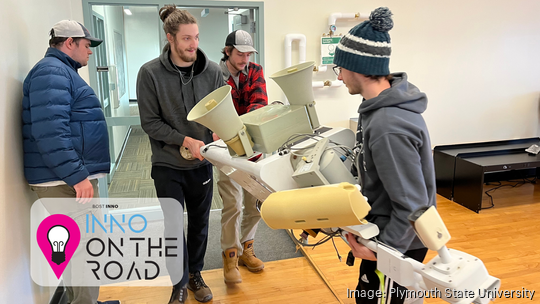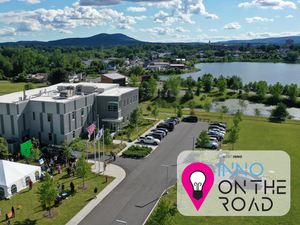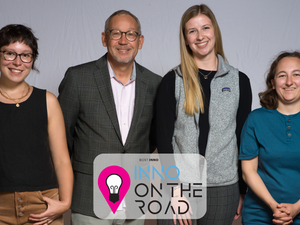
In 2021, Plymouth State University became the first higher education institution in New Hampshire to offer a bachelor’s in robotics degree. A year later, the university announced it was receiving $1 million in federal funding to build a new robotics laboratory on campus.
Students are now fully immersed in a program the university says will help students prepare for the demands of the next generation workforce. The students’ latest project involves bringing back to life a pair of robots that were used by Casella Waste Systems Inc. to ward off wildlife at its Bethlehem, New Hampshire landfill.
Rise of robotics
Bret Kulakovich, an adjunct faculty member in robotics who oversees the makerspace and robotics lab, said robotics is a growing industry in the U.S. job market, including in New Hampshire.
Within a 100-mile radius of Plymouth, Kulakovich said he sees 75-150 jobs in robotics on sites like Glassdoor at any given time.
“I actually think (manufacturing) has come back to America from abroad but we don’t recognize it yet and it’s because of the amount of automation that’s taking place, even on the factory floor. We have lots of very small manufacturers nearby that are already running a production floor that’s 6,000 square feet but they have 40 robots,” Kulakovich said.
He has his students learning about machine vision, industrial automation and fabrication. Kulakovich said it’s important for his students to have a very hands-on education.
“It is much more important to be exposed over and over again to all of these differences in hardware so that you can develop an understanding and have some of those aha moments,” Kulakovich said.
Students’ “scarecrow” project
Kulakovich said the “scarecrow” robots were designed to protect wildlife by keeping them away from landfills. When the robots detected motion, they used different types of responses to get animals to leave. Their scare tactics included playing coyote noises, dazzling animals with a laser and shooting a propane cannon to make a very loud noise.
The robots appear to be about 10 years old judging from the parts, Kulakovich said, and are now largely defunct. The original manufacturer has since changed industries and Casella would otherwise need to bring the robots through customs into Canada to be looked at. That’s where Kulakovich’s students come in.
When the students received two of the robots in March 2023, Kulakovich said they started opening them up, documenting everything and looking for signs of damage. They saw a lot of weather damage, including a wasp nest situated inside one robot. After this process, they tested individual parts to see if they still functioned.
“We’ve broken down one completely and we leave the other one intact, although we’ve tested everything, and that way we can prove things against the different units and make sure that we’re still in some sort of coherency and we have an untouched original regarding the connections and the hardware just so we can double check things,” Kulakovich said.
Last semester, Kulakovich said the goal was to evaluate the conditions of the robots and determine whether they would be restoring them with their “current brains” or starting with a new brain and camera and reintegrating them. The operating system menus were in Chinese and French and the code was difficult to decipher, which meant they were going with the second option.
This semester, Kulakovich’s students are focused less on operating a “robot hospital” and more on the “actual creation of meaningful work.” This includes building out a library of local fauna to create a way for the robot to identify what was approaching and the best reaction, as well as connecting the response mechanisms.
Kulakovich said the goal is to bring the robots out into the wild for some testing next spring.
Sign up for The Beat, BostInno’s free daily innovation newsletter from BostInno reporter Hannah Green. See past examples here.








